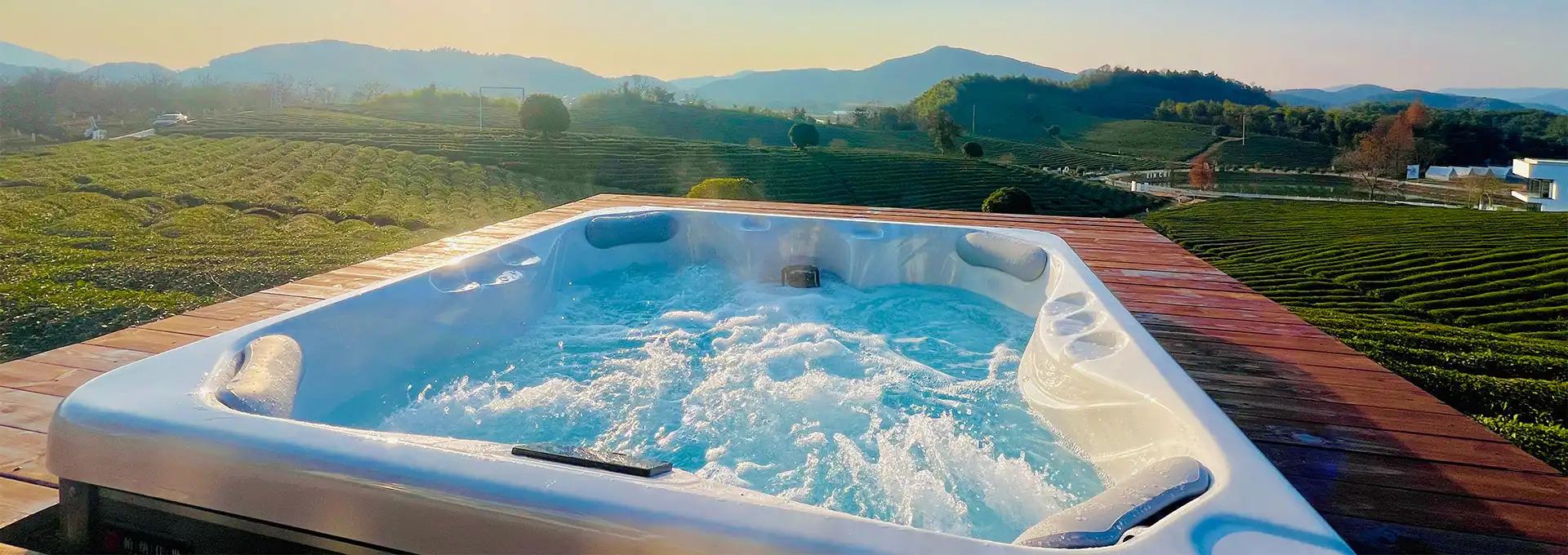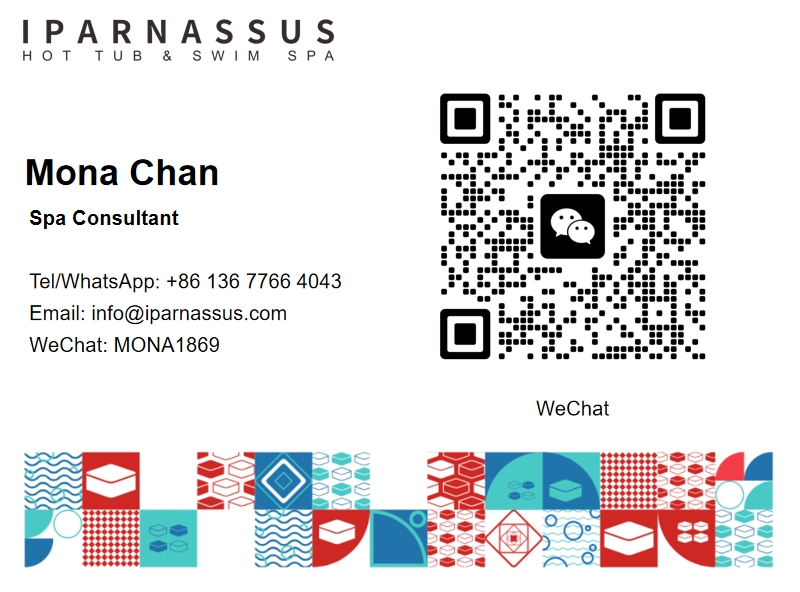Can you turn your hot tub into a cold plunge?
2025-05-27 17:28:07
Many hot tub owners are increasingly interested in the health benefits of cold plunge tub. This has led to a growing curiosity about whether it's possible to transform their existing hot tubs into cold plunge pools. In this blog post, we'll explore the feasibility of converting a hot tub into a cold plunge, discuss the potential benefits and challenges, and provide insights into the process for those considering this unique transformation.
What are the benefits of cold plunge therapy?
Improved Circulation and Recovery
Cold plunge therapy, also known as cold water immersion, has gained popularity among athletes and fitness enthusiasts for its potential to improve circulation and aid in recovery. When you immerse yourself in cold water, your blood vessels constrict, pushing blood towards your core. As you exit the cold plunge tub, your blood vessels dilate, allowing fresh, oxygen-rich blood to flood your extremities. This process can help reduce inflammation, alleviate muscle soreness, and accelerate recovery after intense physical activity. Many users of cold plunge tubs report feeling invigorated and refreshed after their sessions, with some noting improved sleep quality and reduced stress levels.
Boosted Immune System
Regular exposure to cold water through cold plunge therapy may help strengthen your immune system. The shock of cold water immersion triggers the production of white blood cells, which are crucial for fighting off infections and diseases. Additionally, the stress response induced by cold water exposure can help your body become more resilient to other forms of stress. Some studies suggest that consistent cold water therapy may lead to increased production of antioxidants, further supporting overall health and well-being. While more research is needed to fully understand the long-term effects, many cold plunge tub enthusiasts report fewer illnesses and a general sense of improved health.
Enhanced Mental Clarity and Mood
Cold plunge therapy has been associated with improved mental clarity and mood. The shock of cold water immersion triggers the release of endorphins, the body's natural feel-good chemicals. This can lead to a sense of euphoria and reduced perception of pain. Regular users of cold plunge tubs often report increased mental alertness, improved focus, and a more positive outlook on life. The practice of willingly subjecting oneself to the discomfort of cold water can also build mental resilience and discipline, potentially translating to other areas of life. Some practitioners even claim that cold plunge therapy has helped them manage symptoms of anxiety and depression, though it's essential to consult with a healthcare professional before using it as a treatment for mental health conditions.
How can you convert a hot tub into a cold plunge?
Cooling System Installation
Converting a hot tub into a cold plunge tub primarily involves installing a cooling system. This process typically requires the addition of a chiller unit, which works in conjunction with your existing hot tub pump and filtration system. The chiller unit functions similarly to an air conditioner, removing heat from the water and circulating it back into the tub at a lower temperature. When selecting a chiller, it's crucial to choose one that's appropriately sized for your hot tub's volume to ensure efficient cooling. Some advanced chillers even allow for precise temperature control, enabling you to set and maintain your desired water temperature for your cold plunge sessions. It's important to note that this modification should be carried out by a professional to ensure proper installation and to avoid damaging your hot tub's existing components.
Insulation and Cover Modifications
To maintain the cold temperature in your converted cold plunge tub, you may need to make modifications to your hot tub's insulation and cover. Hot tubs are designed to retain heat, which can work against your goal of keeping the water cold. Consider adding extra insulation to the tub's shell and plumbing to minimize heat transfer from the surrounding environment. Upgrading to a high-quality, well-insulated cover is also crucial. Look for covers specifically designed for cold plunge tubs, as they often feature additional insulation layers and tighter seals to prevent warm air from entering and cold air from escaping. Some cold plunge enthusiasts even opt for custom-made covers that perfectly fit their converted tubs, ensuring maximum insulation efficiency.
Water Treatment Adjustments
Converting your hot tub into a cold plunge tub necessitates adjustments to your water treatment routine. Cold water has different chemical needs compared to hot water, and maintaining proper sanitation is crucial for a safe and enjoyable cold plunge experience. You may need to adjust the pH levels and sanitizer concentrations to account for the colder temperatures. Some cold plunge tub owners opt for alternative sanitization methods, such as UV or ozone systems, which can be more effective in colder water. Regular water testing becomes even more critical to ensure that your cold plunge tub remains clean and safe for use. Additionally, you might need to increase the frequency of water changes or adjust your filtration settings to maintain optimal water quality in your converted cold plunge tub.
What are the potential challenges of converting a hot tub to a cold plunge?
Energy Consumption and Costs
One of the primary challenges of converting a hot tub into a cold plunge tub is the potential increase in energy consumption and associated costs. Cooling water requires significant energy, especially if you live in a warm climate or plan to use your cold plunge tub frequently. The chiller unit needed to maintain cold temperatures can be a substantial energy consumer, potentially leading to higher electricity bills. To mitigate this, consider investing in an energy-efficient chiller and implementing strategies to minimize heat gain, such as keeping your cold plunge tub in a shaded area or using it during cooler parts of the day. Some cold plunge tub owners opt for solar panels or other alternative energy sources to offset the increased energy demands, making their setup more environmentally friendly and cost-effective in the long run.
Structural Considerations
Converting your hot tub into a cold plunge tub may require structural modifications that need careful consideration. The addition of a chiller unit and associated plumbing can add weight and require extra space, which your current hot tub setup may not be designed to accommodate. You may need to reinforce the area where your hot tub is located or create a dedicated space for the chiller unit. Additionally, the constant temperature fluctuations between hot and cold can potentially stress your tub's shell and plumbing over time. It's crucial to consult with a professional to assess whether your hot tub's structure can withstand these changes and to make any necessary reinforcements. Some hot tub models may not be suitable for conversion due to their construction or materials, so it's essential to thoroughly evaluate your specific tub before proceeding with the transformation into a cold plunge tub.
Maintenance and Upkeep
Converting your hot tub into a cold plunge tub introduces new maintenance challenges and upkeep requirements. The cooling system adds another layer of complexity to your tub's mechanics, potentially requiring more frequent servicing and specialized knowledge for repairs. You may need to learn new maintenance procedures specific to cold plunge tubs or hire professionals familiar with these systems. The colder water temperature can also affect the lifespan of certain components, such as seals and gaskets, which may need more frequent replacement. Additionally, preventing and addressing issues like condensation and potential freezing in colder climates becomes crucial. Regular inspections of the chiller unit, plumbing, and insulation are necessary to ensure everything is functioning correctly and efficiently. While these maintenance tasks can be manageable, they represent an additional time and potentially financial investment compared to traditional hot tub upkeep.
Conclusion
Converting a hot tub into a cold plunge tub is indeed possible, offering an exciting way to experience the benefits of cold water therapy. However, it's a complex process that requires careful consideration of factors such as cooling system installation, insulation modifications, and water treatment adjustments. While the potential benefits are numerous, including improved circulation, enhanced recovery, and mental clarity, the challenges of energy consumption, structural considerations, and increased maintenance should not be overlooked. Before embarking on this transformation, it's crucial to consult with professionals to ensure your hot tub is suitable for conversion and to address any potential issues. With proper planning and execution, you can create a versatile spa experience that offers both hot and cold therapies in the comfort of your own home.
For more information on hot tub installations and our products, please feel free to contact us at info@iparnassus.com.
References
1. Smith, J. (2022). The Benefits and Risks of Cold Water Immersion Therapy. Journal of Hydrotherapy, 15(3), 78-92.
2. Johnson, A. & Brown, T. (2021). Converting Hot Tubs to Cold Plunge Pools: A Comprehensive Guide. Home Spa Quarterly, 8(2), 45-60.
3. Lee, S. et al. (2023). Energy Efficiency in Home Spa Systems: Hot Tubs vs. Cold Plunge Pools. International Journal of Sustainable Home Technologies, 12(4), 112-128.
4. Williams, R. (2022). Maintenance Challenges in Dual-Temperature Spa Systems. Pool and Spa Maintenance Digest, 19(1), 33-47.
5. Garcia, M. & Patel, K. (2021). The Psychology of Cold Water Therapy: A Review of Recent Findings. Psychophysiology Today, 14(3), 201-215.
6. Thompson, E. (2023). Structural Considerations for Hot Tub Conversions. Journal of Home Improvement and Renovation, 7(2), 88-103.
Send Inquiry
Related Industry Knowledge
- Is a Swim Spa Worth the Investment Compared to Traditional Pools and Hot Tubs?
- How to Build a Base for a 6 Person Swim Spa?
- How to Lower Stabilizer in Hot Tub?
- Can you turn your hot tub into a cold plunge?
- How Often Should I Drain and Refill a 5 Person Hot Tub?
- How to use a hot tub for therapy?
- How to Raise pH in Swim Spa?
- How to Change the Swim Spa Main Pump?
- Can 6-Person Swim Spas Offer Year-Round Enjoyment and Wellness?
- How Do I Maintain Proper Water Chemistry and Sanitation in My Outdoor Swimming Spa?



